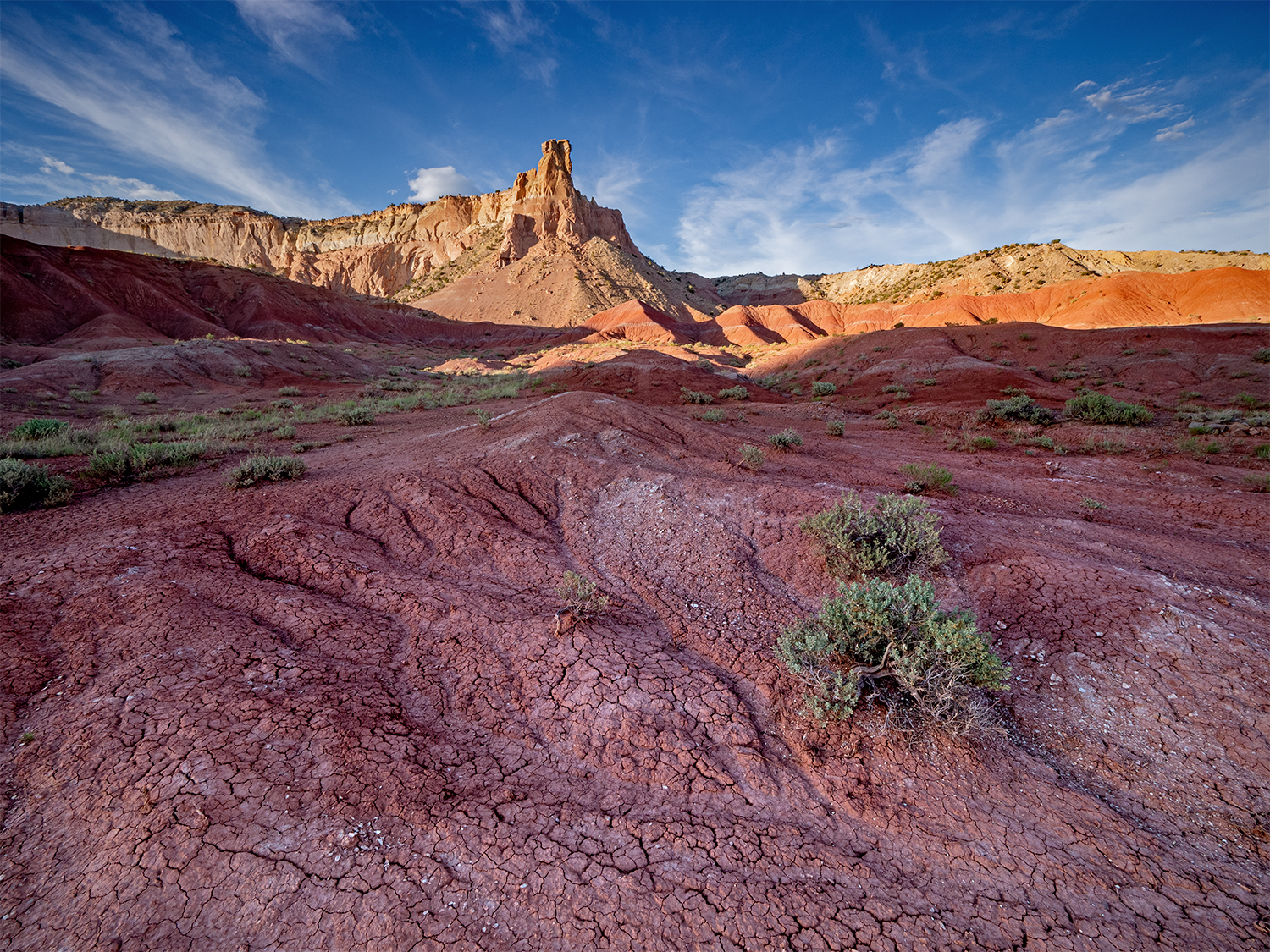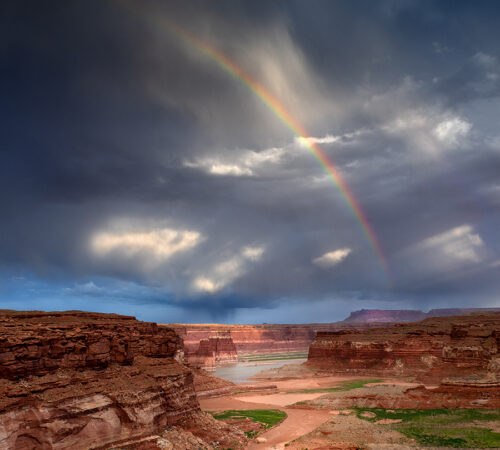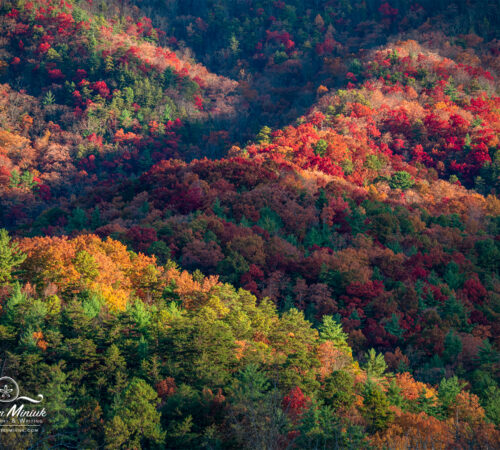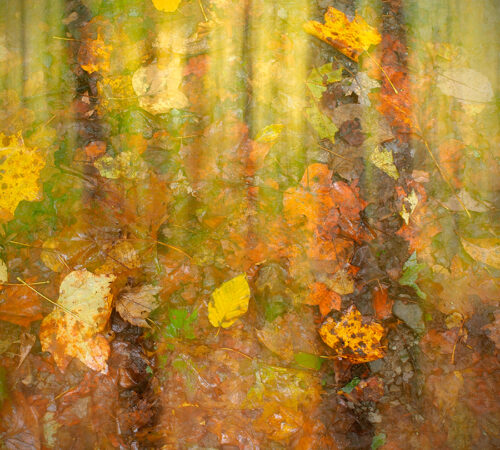Coming Un-Done
 Dear Bubbles:
Dear Bubbles:
I feel like everything in the world has already been photographed. I’ll come up to a scene and say (sarcastically), “I’ve never seen that before.” So why bother photographing at all? How do I photograph something differently if it’s already been done before?
~Unmotivated
Dear Unmotivated:
Yeah, sure, everything in the world has probably already been photographed in some way, shape, or form. Sunrises along the coast. Endless fields of sunflowers. The Milky Way. Let’s face it, even the most elusive subject matter—ghosts, Bigfoot, Chupacabra—have (supposedly) been photographed too.
And gosh, the internet and social media give us a front-row seat to the incessant stream of photographs. From everyone. From everywhere across the Earth. Not only have other people made photographs of so many familiar scenes, but also some have made really outstanding images of them. Which is super awesome!
But it can also get a little disheartening at times, can’t it? The pressure to be different AND better can feel pretty overwhelming, can’t it? Sigh…
Although it’s tough to turn off the flow sometimes, forget everyone and everywhere for just a minute. I’m going to flip this on you and ask: Has everything in this world been experienced by you? Has everything in this world been interpreted by you in the exact way you can and do? Has everything in this world been photographed by you?
The answers are no, no, and no. Let’s be real, to fit experiencing “everything” and “everywhere” into a single lifetime is an impossible and unattainable goal. That doesn’t mean we give up. We can still try to fill our own lives with as many experiences as we can. You might be temporarily out of ideas for your photography, but there’s a lot of world out there you haven’t experienced yet.
Keep in mind that you are the only person on this planet to encounter and interact with the world in the exact way you do. There has never been a “you” before in history. There will never be another you in the future. You are the one and only you for all of eternity.
So you need not try to be different. In your existence, by nature, you already are different. You only need to be yourself exactly as you are and live your life, making photographs of YOUR most important moments, the ones that resonate with you in the best way you know how, as you make your way through the time gifted to you. As photographer Paul Strand wrote, “Look at the things around you, the immediate world around you. If you are alive, it will mean something to you, and if you care enough about photography, and if you know how to use it, you will want to photograph that meaningness.”
It may comfort you to know that you aren’t the only one who has ever felt unenthusiastic about continuing to create. In fact, running out of ideas and motivation is so common, yet complicated, that researchers study it. In one report from the 1970’s, two psychologists named Jerome Singer and Michael Barrios determined four primary causes of why writers feel unmotivated to write. “Writers block” resulted from:
- Excessively harsh self-criticism.
- Fear of comparison to other people.
- Lack of external motivation like attention and praise.
- Lack of internal motivation like one’s interest and confidence in telling one’s personal story.
Simply by knowing these four reasons can help us get un-done and remotivated through tangible actions. To address the sources Singer and Barrios identified, in order:
- Cut yourself some slack: Your harshest critic for your thoughts, decisions, and actions is you. Pay attention to the narrative in your head. Talk nicely to yourself. Thoughts are just thoughts, they are not facts or truth. If you can believe the negative thoughts your brain made up, you can believe the positive ones your brain will make up just the same. Release any unrealistic expectations and unnecessary pressure you’re putting on yourself to perform, to create, to photograph. Create for the simple, but important joys of creating for creations sake without judging the results (i.e. adopt an autotelic approach).
- Find courage and strength in your own path: The Singer-Barrios study was conducted in the 1970s. Can you imagine what they would have discovered today with our use of addiction to social media?! The U.S. Surgeon General recently issued a health advisory on the use of social media. While this declaration specifically called out social media’s impact to teens, additional studies have shown adults feel similar mental blows: thoughts of inadequacy, damaged self-worth, anxiety, depression. So when you spend time on the internet, use it to gain new ideas to new approaches, techniques, and perspectives. Expand your understanding. But please don’t dismiss or diminish the value of YOUR interests, YOUR opportunities, YOUR growth in your appraisal of others. It’s simply not fair to you. (Plus, recognize much of what you see on the internet either isn’t real or isn’t presenting a full picture of a person’s reality.) You are on your own path through your life. Everyone is moving at different speeds in different directions with different interests and goals on theirs. And everyone can live their different paths and they ALL be right answers. Live your own right answers.
- Identify why you photograph. When you asked “Why bother to photograph,” a few more questions popped up in my mind to help get to the answer. Ask yourself, “Why are you a photographer? Why do you photograph? What truly motivates you to walk around the world with a camera in your hand?” (Ask these frequently because the answer can and will change over time.) It’s probably not because you like your finger clicking the shutter button. Or because you win ribbons in your camera club’s competitions often. Or because your parents handed you a camera when you were 12. Your “why” is much deeper than that, but the simple answer can be that you simply enjoy discovering the world through photography. That’s enough reason to continue. Sure, humans love getting praise and attention for their work. But we don’t control extrinsic rewards—their timing, their amount, their sincerity. Please don’t hang your camera or your self-worth or your incentive to create around someone else’s neck.
- Acknowledge, accept, and celebrate your uniqueness: In your life. In your photography. In any means of expressing yourself you choose. Believe that that the story of your uniqueness is worth commemorating through your creations (including, but not limited to, your photographs). Keep in mind that should you decide to not share your perspectives, memories, interests, etc., either through photography or other means—which is entirely your prerogative—they will never be heard.
Once you overcome the motivational challenges to proceed, then it’s on to how to photograph things differently. Here are my additional non-scientific, but works-for-me, photography-related ideas of my own to this pep talk:
- Switch your focus (pun intended) from making photographs to making meaning: Photography, at least in a creative sense, is not limited to things (“everything”) and places (“everywhere”). Expressive photography means you are expressing your own emotional responses, interpretations, imagination, and values. It means you’re telling the story of your own life as it unfolds. You’re aiming to share the confluences between people, places, things, and ideas that mean something uniquely to us. To quote Paul Strand again: “I’ve always wanted to be aware of what’s going on around me, and I’ve wanted to use photography as an instrument of research into and reporting on the life of my own time.” What can you report about your own life through your photographs?
- Start back up again in learning mode. Creative experts agree that to facilitate a new idea, you must have existing knowledge (i.e., raw materials) and relaxation from mental fixation. Instead of making images, build your knowledge base by leaning into your own curiosity. What questions do you have about the world around you? Learn the names of the flora and fauna you notice. What questions do you have about photography? Learn a new technique or press a new button or figure out a new menu function. What questions do you have about yourself as you wonder and wander about this world? Understand on a deeper level your preferences, perceptions, and habits. Then challenge them all. Creative growth does not necessarily depend on you snapping the shutter. Curiosity and paying attention fuel new photographic ideas as you wander and wonder.
- Embrace shoshin: Shoshin is a Zen Buddhism philosophy of experiencing everything as if you’re experiencing it for the first time. It encourages us to embrace awe and wonder in the world around us. So instead of rolling your eyes when you say, “I’ve never seen that before,” act as if you’ve truly never seen it, whatever it is, before. Pretend (if you must) to lose your mind over a blade of grass, an interesting shadow pattern on the wall, a pencil, or a butterfly. Gush over it as if you were 4 years old. Reclaim that childhood joy! This may sound like “fake it ‘til you make it” (and it is!), but by doing so, you can train your brain to think and respond in new ways. (It’s called neuroplasticity.) While you’re add it, add a dose of gratitude for all the incredible things in our lives. The grass. The light. The pencil. The butterfly. How much we take for granted in our everyday lives as adults! Magic is all around us if we just care to see it.
- Connect your imagination with the world you experience: Arguably, it is challenging—but not impossible—to photograph iconic scenes in new ways. But iconic scenes aren’t the only thing to photograph out there. (And really, how much of your life is taken up by visiting these specific places anyhow?) To draw out your individuality into a photograph anywhere your travels take you (even your own backyard), ask yourself “What else is it?” Your answer will come from your existing knowledge. And every answer you come up with is a valid, right one (so long as you don’t judge it otherwise). Make a photograph of the metaphorical association instead of the literal interpretation. If you’d like a refresher on how to translate these connections through visual language and communicate meaning in a photograph, please visit my Dear Bubbles column on “On Breaking the Rules”.
- Distract yourself with combinatory play: Albert Einstein suggested that combinatory play is “the act of opening up one mental channel by dabbling in another”. Combinatory play is kind of like looking at Pleiades in the night sky. If you stare right at it, the star constellation appears dim. If you look just to the left or the right of it out of the periphery of your vision, it appears much brighter. The fastest way to prevent a photograph from materializing is to force a photograph to materialize. Doing so activates parts of the brain that do not stimulate creativity. Distracting your brain by investing time and effort into other activities—hiking, painting, singing, dancing—triggers the creative parts of your brain and leads to new ideas for your photography.
- Step back from photography for a bit: I’ve checked The Almighty Library of Internet Wisdom and consulted with the Photography Gods. Good news! There are no laws that suggest how much you should photograph or when you should photograph. Don’t feel like photographing? Don’t photograph. The end. Life goes on. In other words, be kind to yourself.
Above all, cherish every moment of your life regardless of whether you decide to make a photograph of it or not. The moment in front of you right now or when you’re in the field or traveling will never happen again in the exact same way. The light. The color. The weather. The sound. The feeling. Your subject’s behavior. The stillness. The chaos. Your connection to it all. If you’re learning and growing as a human, the lens you’ll perceive moments through changes too.
Every moment in your life has the power to be extraordinary if you treat it as such. And if every moment feels extraordinary, then each and every moment also has the potential to be celebrated through your photographs. If you’re alive, you aren’t done yet…
Be well, be brave, be wild,
~Bubbles
If you liked this post and others like it, please consider supporting Dear Bubbles either through a monthly contribution through Patreon or a one-time donation through Buy Me a Coffee. Learn more about both at https://dearbubbles.com/support.
Have a question about photography, art, and/or the creative life? Need some advice? Looking for inspiration? Send your question to Dear Bubbles at colleen@colleenminiuk.com to be possibly featured in a future column post. (If you’d prefer a different display name than your real first name, please include your preferred nickname in your note.





One Comment
Monica
Some years ago, I made a photograph that I spent time with and happened to share it with someone. That someone stated: “It’s been done before.” To which I responded: “It’s my turn.”
Take your turn with whatever inspires you to see and photograph.